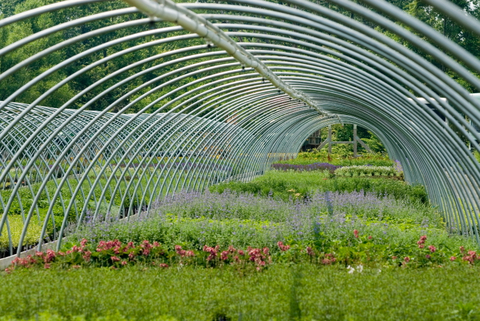You are here
Container Nursery Production
 Container-nursery operations are moderate to highly intensive systems, that primarily produce plants in small (1-gallon) to large (15-gallon) containers in soilless substrates such as pine bark. Occasionally growers produce trees in containers up to 100-gallon (387 L) in volume.
Container-nursery operations are moderate to highly intensive systems, that primarily produce plants in small (1-gallon) to large (15-gallon) containers in soilless substrates such as pine bark. Occasionally growers produce trees in containers up to 100-gallon (387 L) in volume.
A typical container-nursery may grow 50-250 species of plants at any one time, with numerous cultivars of each species, depending upon market demand and the ability of employees to care for a diverse range of plant requirements.
The primary economic production objective of these nurseries is quick turnover and high quality, and so plants are often grown closely packed, in blocks. Most plants are grown in a single season. Plants that are carried over to another year are "shifted up" to a larger container. The vast majority of plants are grown in 1-7 gallon sizes.
Irrigation water is routinely applied on a daily basis throughout much of the growing season (Mar - Nov). The majority of large growers use overhead impact sprinkler style irrigation, primarily for ease since drip or low-volume systems are time demanding to install and maintain and therefore economically impractical for small container sizes. Plants are often grown in hoop-houses from USDA hardiness zone 8 northwards, which are covered with plastic during the winter months to protect plants from freeze damage.
Fertilizers are often incorporated or top-dressed. Slow-release fertilizers are a recognized best management practice that aids in reducing nutrient runoff. While many operations capture runoff in containment ponds to recycle water and nutrients, there are still a large number of operations that discharge 100% of irrigation runoff into non-recycling basins.
